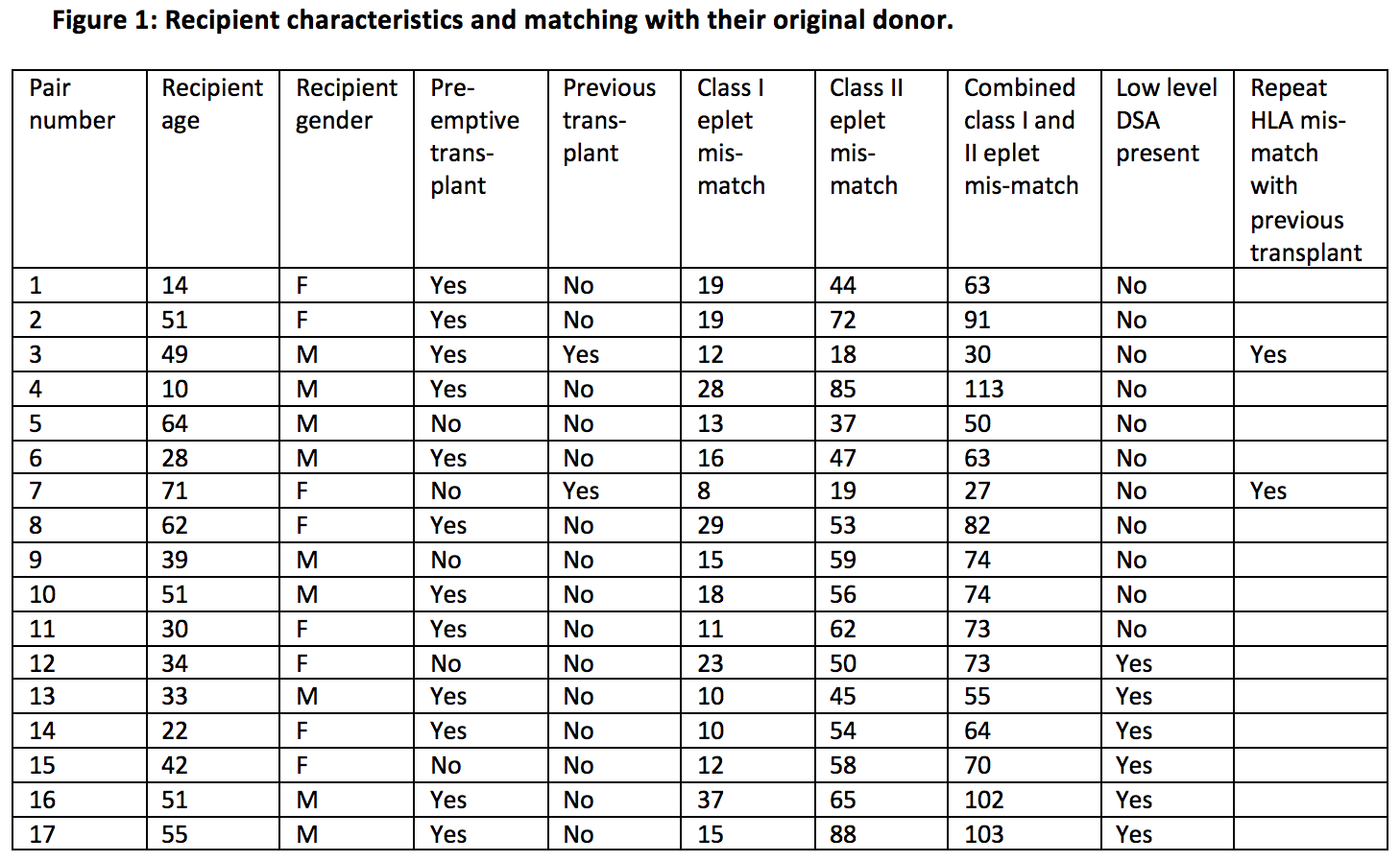Inclusion of Compatible Pairs in the Australian Paired Kidney Exchange Program
1Nephrology, Royal Melbourne Hospital, Melbourne,Victoria, Australia, 2Nephrology, Royal North Shore Hospital, Sydney, New South Wales, Australia, 3Victorian Transplantation and Immunogenetics Service, Australian Red Cross Blood Service, Melbourne,Victoria, Australia
Meeting: 2019 American Transplant Congress
Abstract number: B295
Keywords: Kidney transplantation
Session Information
Session Name: Poster Session B: Kidney Paired Exchange
Session Type: Poster Session
Date: Sunday, June 2, 2019
Session Time: 6:00pm-7:00pm
 Presentation Time: 6:00pm-7:00pm
Presentation Time: 6:00pm-7:00pm
Location: Hall C & D
*Purpose: The Australian paired kidney exchange (AKX) program allows the inclusion of compatible pairs (CP) to allow improved immunological matching. Previous modelling showed that inclusion of CP would allow improved matching for poorly matched pairs and increased rates of transplantation for incompatible pairs in the pool. We report the experience with CP during 2017-2018.
*Methods: Data on CP was extracted from the AKX database and the Victorian Transplantation and Immunogenetics Service, Australian Red Cross Blood Service. Eplet mismatches were calculated using HLA matchmaker v2.1.
*Results: Seventeen pairs were considered to be compatible out of 159 involved in match runs over this time. Characteristics of the recipients who were considered as compatible pairs are shown in figure 1. The reasons that recipients were entered into AKX are shown in table 1. The average age of recipients in CP was 41.5 years although those entered solely due to poor eplet matching were younger (31.9 years). Sixteen of the 17 recipients were transplanted in AKX, the remaining one was offered a match but declined it due to the presence of a very low level DSA and then proceeded with a direct live donor transplant. Of those who were transplanted in AKX, 14 received their offer in the first match run while 2 received it in the second. Of those who were transplanted in the AKX, those that began with poor matching with their original donor (groups 1,2,4) had better matching with the matched donor (Table 2). No improvement in elet matching was seen in the other groups. Two recipients accepted a kidney from a donor against whom they had low level DSAs. Two different recipients accepted a kidney from an ABO incompatible donor. Those transplanted in AKX were in 13 separate chains which included 42 incompatible pairs. Of these 15 had a cPRA>90% and 5 had a cPRA>97%.
*Conclusions: A range of pairs entered into paired exchange programs can be considered to be compatible. In the AKX the majority of those entered received an offer in the first match run. Those entered due to poor eplet matching typically received a kidney from a better matched donor. Compatible pairs might facilitate increased matching in a paired exchange program including in highly sensitised incompatible pairs.
| Group | Reason for entry into AKX | Number of pairs | Average age of recipients |
| 1 | High level of eplet mismatch | 7 | 31.9 |
| 2 | High level of eplet mismatch with low level DSA | 5 | 40.6 |
| 3 | Repeat mismatch without detectable DSA | 2 | 60 |
| 4 | Male to female partner with previous pregnancy, low level DSA and high eplet mismatch | 2 | 48 |
| 5 | Altruism | 1 | 64 |
| Mean total number of mismatched eplets with original donor | Mean total number of mismatched eplets with matched donor | Mean reduction in total eplet mismatch | ||
| 1 | High level of eplet mismatch | 78.7 | 38.3 | 41.3 |
| 2 | High level of eplet mismatch with low level DSA | 78.8 | 56.2 | 22.6 |
| 3 | Repeat mismatch without detectable DSA | 28.5 | 62.5 | -34 |
| 4 | Male to female partner with previous pregnancy, low level DSA and high eplet mismatch | 77.5 | 32.5 | 45 |
| 5 | Altruism | 50 | 50 | 0 |
To cite this abstract in AMA style:
Hardeveld Evan, McGinn S, Cantwell L, Kummrow M, Hughes P. Inclusion of Compatible Pairs in the Australian Paired Kidney Exchange Program [abstract]. Am J Transplant. 2019; 19 (suppl 3). https://atcmeetingabstracts.com/abstract/inclusion-of-compatible-pairs-in-the-australian-paired-kidney-exchange-program/. Accessed December 14, 2025.« Back to 2019 American Transplant Congress

